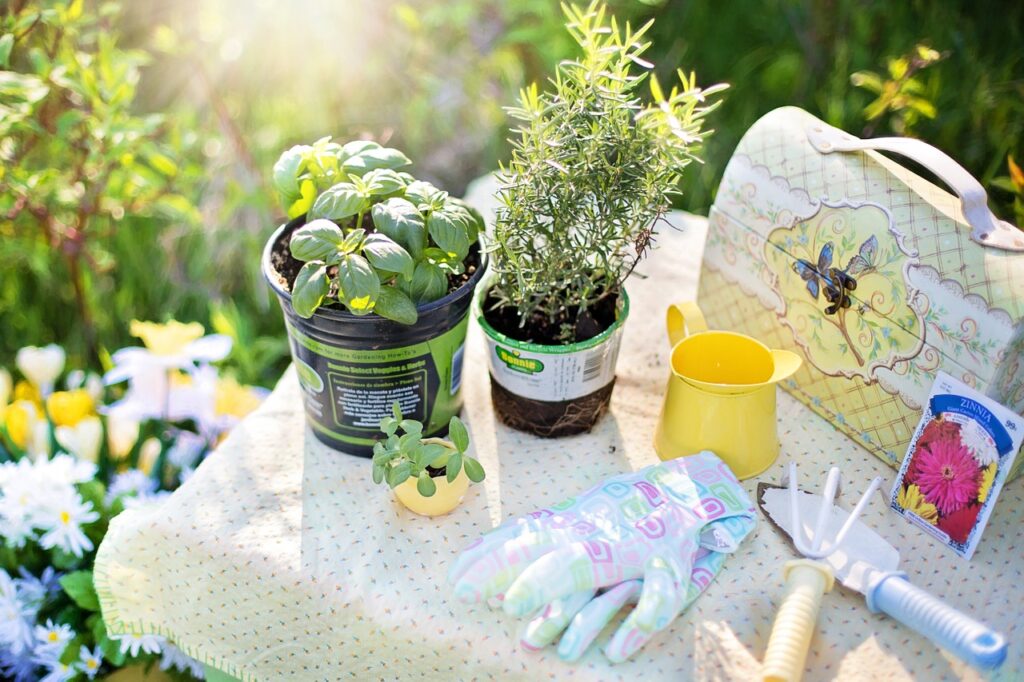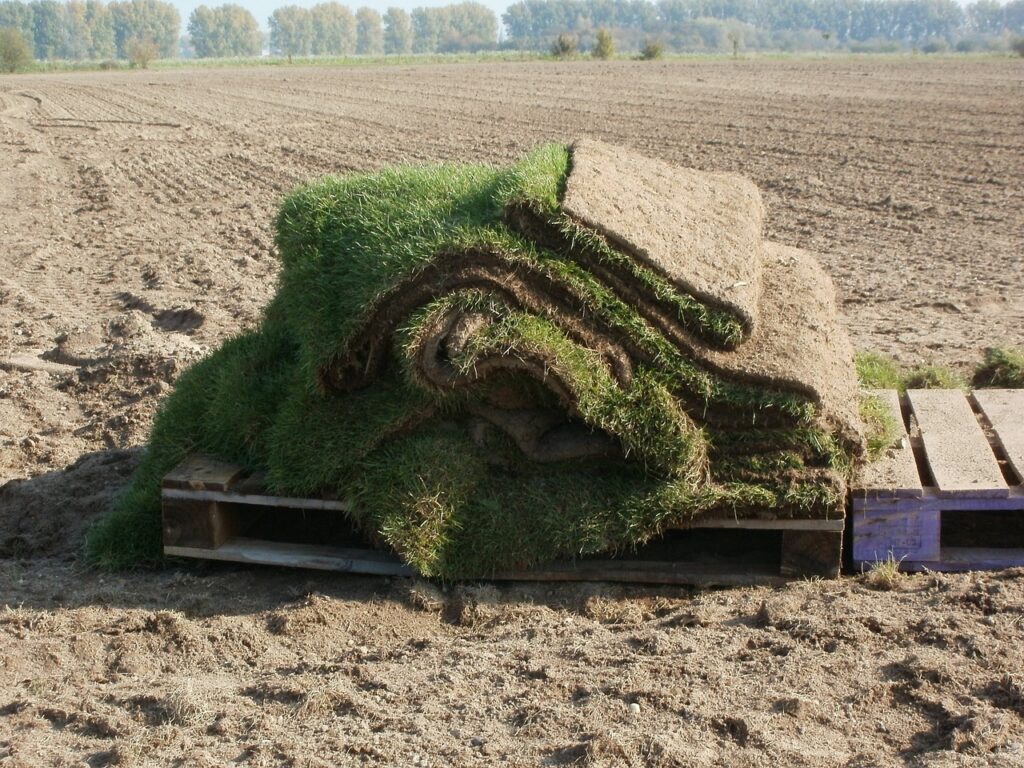How to Build A Lawn Without Grass
The process of trying to find the best alternative to a grass-covered lawn is often filled with frustration and disappointment and time and money wasted. Find out in this article how you can successfully build a lawn without grass with some great alternatives!
Introduction
Grass is the most popular type of turf to be laid over pavement. As you are aware, grass grows rather quickly, so it must be cut or mowed often to stay shorter. With all the time and effort that maintaining a lawn takes, many people have opted for other options.
Artificial turf has become increasingly popular among homeowners who want an attractive lawn that requires minimal care. Artificial turf is just hard plastic, so there are no worries about weeds or pests.
Why a Lawn Without Grass is a Better Option
We do not know about you but we hate mowing and weeding and fertilizing and watering and all that other stuff. Lawns are something we have to take care of whether we want to or not, so why not try a different solution? Lawns without grass is the answer!
With this article, we will teach you how to build a lawn without grass in your own backyard. You can have a lawn that doesn’t need to be mowed, watered, fertilized, and cut. Perfect for those who are short on space but still want to have a lawn.
Advantages of a Lawn Without Grass
A lawn without grass provides the following advantages:
– You can use it as a play area or to garden next to.
– It’s possible to plant flowers that will not be harmed by the chemicals.
– It is easier to maintain.
– The rain doesn’t cause problems like soils with grass do.
For example, if you are not satisfied with the color of the grass it is possible to apply some fertilizer within the lawn without grass. And if your lawn doesn’t look very nice and you would like to renew it, it is possible to remove the grass and sow new grass.
This has no disadvantages at all, because you don’t have to work with chemicals. You can also use a lawn without grass for many different purposes. For example, you can put down your own flower beds or you can park your car wherever you want. But here is the most important thing: you don’t need to buy a new lawn in this case. So you’ll save money and resources.
Lawns without grass but with flowers

You can replace the grass with herbs or even vegetables. You can also put down your own garden beds in your lawn without grass.
The idea is that you don ‘t have to buy a new lawn, but you can grow your own herb or vegetable garden. It is a good idea because you don’t have to buy expensive and unnecessary things. In this case, you can buy a little garden for your own use. It is also the most appropriate choice because it will be good for the environment and your wallet.
For example, you can use containers with herbs, such as the tomato planter filled with basil leaves . You can also grow herbs in hanging pots. This is also a very practical idea because you can use them indoors and outdoors. Another great option is to start a small herb garden in your balcony. You can also combine them with flowers and other plants.
Famous examples of such gardens are those that cover the tables in the summer and those of winter.The herb garden can be of any shape and size. However, of course, it is better to choose a compact shape that will only require a little space.
How to Start a Lawn Without Grass

It’s now possible to start a lawn without grass. If you need a lawn fast, this is for you.
There are many benefits and it takes less time and money than starting with grass. You’ll never have to deal with the expense and headache of lawn maintenance.
It will also last a lifetime and not require replanting.
Making a lawn without grass is easy. You get lawn by making a sod “foundation” so you can install sod.
The key is to have the sod purchased from a local nursery or garden center.
Follow this step by step to make the sod “foundation” for your lawn without grass:
Step 1: Choose the sod. A “grass-like” sod is preferred as it will always look green, is more durable and doesn’t burn as easily as many other types of sod. Ideally, the sod should be dense enough so that it will stand up well in high heat and humidity. You may find that a sod that is dense enough for this purpose does not establish well in your yard. In that case, you should purchase a more “open” sod and cut it to fit.
Step 2: Install the sod and use a handful of soil for each plant to fill the bottom of the bed. Grasses are 5 to 6 inches tall. If you are planting bluegrass, install them on beds measuring 36 x 24 or 36 x 32 inches . If you are planting a meadow blend, install them on beds measuring 48 x 36 or 48 x 48 inches.
Step 3: Water the newly installed sod enough to moisten the soil.
Step 4: Apply a 20-30 pound cloth, such as burlap or canvas, over the entire bed. The cloth should be tied down at both ends so that it can not blow away.
Step 5: Fill in around the bases of the plants with soil.
Step 6: Cover the entire bed with a tarp to prevent weeds from sprouting up through the sod.
Step 7: Begin mulching the plants immediately.
Step 8: After a few weeks, remove the cloth and mulch for a second time.
Step 9: Water the plants as necessary and remove the debris that has formed over the course of the summer.
Step 10: Continue to water and mulch as needed to maintain a healthy soil mound.
Step 11: Add more fertilizer every month or so.
Step 12: After the first frost of the season, remove all mulch and fertilize the soil with a basic organic fertilizer.
Step 13: For the final planting, allow soil to dry out for a week prior to planting , then plant out in the spring.
Step 14: Mulch as necessary. When you plant your container garden, be sure that the soil is moist at all times and you will have a healthy, happy garden.
Seed Options for a Lawn Without Grass
When you decide to build a lawn without grass, you have many options for what type of lawn to plant. You can choose from many different combinations of seeder types, including deep rooted ground cover, creeping perennials, and short-lived trees. You can also make your own seeder using a wheelbarrow and mulch.
Planning for a New Lawn with No Grass
The process of building a lawn with no grass is much easier than you think. It’s also going to be less expensive and safer for your family, too. You can build a garden or patio or walkway without grass.
Building A Wood Deck For Heat and Storage. Build a wood deck for heat and storage. Build a wood deck for heat and storage. Follow these steps to build the perfect deck that will last for years.
Build the deck with pressure treated lumber, then add a layer of cedar or composite lumber on top of that.
For a deck that can be enjoyed for years to come, this is the perfect plan.Tile Decking: Uses, Design & Maintenance.
Tile decks are often an attractive, durable option for homeowners.
Pros and Cons of Starting a Lawn With No Grass
There are many positives to using no grass on your lawn. You can use the space for other things like more flowers or vegetables, you can build more soil, and there are fewer weeds because there is no grass to pull up.
On the downside of no-grass lawns, it’s harder to water the garden and there may be more erosion around the foundation or around trees. Another negative is that there are fewer birds to provide pest control. The weeds will have to be pulled by hand, but there are many safe and easy ways to do this.
What You Need To Do Before Starting a New Lawn With No Grass.
Before you start mowing your lawn, you should consider many factors. You should know that you will not see or feel any difference in the appearance of your lawn until the second year.
Conclusion
I hope you got some good information out of this blog. It was about how to build a lawn without grass.
